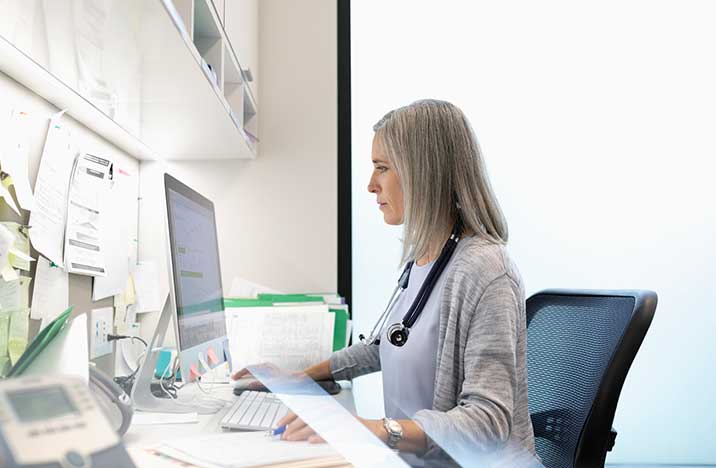Confessions of a Nurse Whose Passion for Patient Care Was Supported By Automation
Heidi Grossweiler, MSN, RN
Sr. Nurse Consultant
I always wanted to be a nurse. At 15, I was a volunteer candy striper and began my career back in the late ‘80s, when medication management automation was almost nonexistent.
When I would come in for my shift at 6 p.m., nurses would have to mix the IV medications on the counter in the medication room. Each patient’s medications would be in a specific bin and if we needed a medication that was newly ordered on the night shift, we contacted security and they met us at the pharmacy, unlocked the door, and we would then have to find that medication on the shelf to give to the patient.
I was first introduced to automated dispensing cabinets for removal of medications when I graduated from nursing school and began working at a hospital in South Carolina. I quickly learned how the automation cabinets provided security and safety for patient care. The automated dispensing cabinets (ADCs) provided an electronic process forremoving medications based on physician orders, which ensured the 5 rights of medication administration: right patient, right dose, right drug, right route and right time.
ADCs also prevented nurses from giving a medication that was discontinued because that medication would not be available for removal based on the order. At that time, the medications that came from the pharmacy were delivered to the nursing floors by an automated robot delivery system called TUG.
An automated robot within central pharmacy gathered the appropriate medications to be delivered to not only the ADC but patient bedside bins. The robot used barcode scanning to ensure patient safety and reduce human error on procuring medications for delivery to patients.
At that time, there were not many pharmacy software systems available for monitoring medications. As I continued my career and advanced to a management position within surgical services, it became apparent to me that reporting remained a manual process. In order to identify gaps in medications given, wasted and returned, we had to print reports through the ADCs and manually evaluate the informationon paper. We were getting closer to true automation but weren’t quite there yet.
With the advancement of diversion software and the ability for closed loop interoperability, the manual process can be eliminated, allowing hospital systems – not only in nursing but pharmacy – to accurately evaluate controlled substance management.
The latest advancements in managing medications within the last few years, such as IV compounding robot, has advanced the delivery of IV medications and removed human error to ensure accurate IV dosesand accurate labeling of the solutions.
As automation continues to evolve, I’m excited to see how medication management, from delivery to administration, has continued to advance to provide the most safe, accurate, and real-time monitoring that ensures safety for all phases of the medication delivery process. These advancements continue to allow nurses to practice at the top of their license and provide the best care to our patients.
DISCLAIMER
The views and opinions expressed in this blog are those of the authors and do not necessarily reflect the official policy or position of any other agency, organization, employer or company. Assumptions made in the analysis are not reflective of the position of any entity other than the author(s). These views are always subject to change, revision, and rethinking at any time and may not be held in perpetuity.
 Back to Blog
Back to Blog

